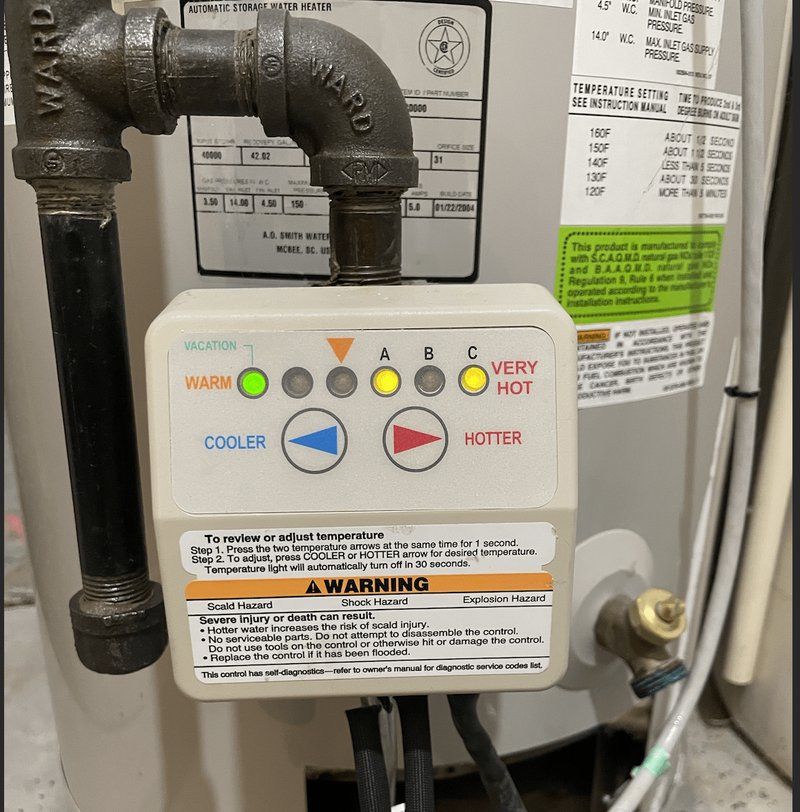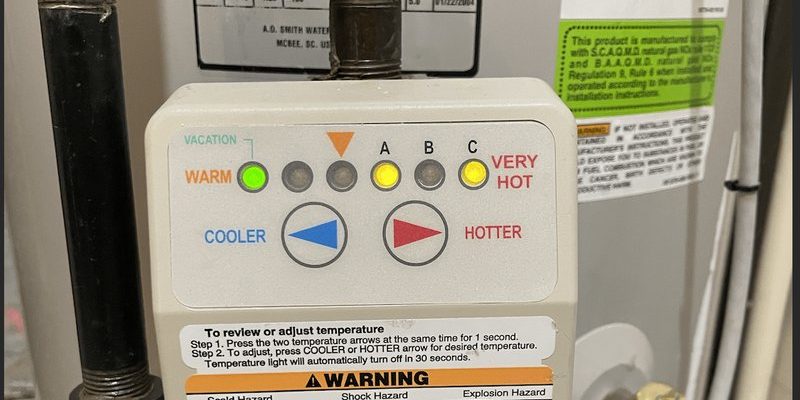
Error Code E2 on an AO Smith water heater usually signals an issue with the heater’s temperature sensor, but it’s like trying to understand a cryptic message without the right knowledge. This error is essentially the water heater’s way of waving a flag to let you know there’s something up with the temperature readings. In simpler terms, think of the temperature sensor as a thermometer that reports how hot the water is. If this sensor malfunctions, it could provide incorrect readings, kind of like wearing sunglasses indoors and wondering why everything looks so dim.
Now, let’s dive deeper and explore the common causes that can trigger this pesky Error Code E2. By understanding these causes, you’ll be better equipped to address the issue and get your water heater back to producing those glorious hot showers.
Understanding Temperature Sensor Malfunctions
First up, let’s tackle the temperature sensor itself. Imagine trying to bake a cake without knowing the correct temperature of your oven. You’re bound to end up with a gooey mess or a rock-hard disaster. Similarly, if the temperature sensor in your water heater isn’t working right, it can’t accurately gauge the water temperature, which leads to problems—cue the Error Code E2!
One common cause of a malfunctioning temperature sensor is a faulty connection. Over time, the connection between the sensor and the control panel can become loose or corroded, much like an old battery in a remote control. This weakens the signal, leading the system to mistakenly think there’s a problem with the water temperature. A quick fix often involves checking the sensor’s wiring and connections for any signs of wear or looseness.
Another potential culprit could be a damaged sensor. It’s not unlike when a thermometer breaks; it can no longer give a reliable temperature reading. Causes for this type of damage can range from physical impact to simple wear and tear over time. Replacing the temperature sensor might sound daunting, but it’s similar to replacing a broken light bulb. Once swapped, the error code usually vanishes.
Lastly, electrical surges or fluctuations can also wreak havoc. Imagine a power surge as a sudden jolt of energy that can fry circuits, including your temperature sensor. Installing a surge protector might prevent future occurrences, safeguarding your system from electrical quirks.
Potential Water Flow Issues
Water flow issues can be another sneaky reason behind the E2 error code. Picture a clogged faucet that only dribbles water when fully opened; not ideal, right? Your water heater could face similar problems if there’s an obstruction in the water line or if the water flow is irregular.
One possibility is that sediment buildup in the water lines is causing blockages. Over time, minerals from hard water can accumulate, forming a stubborn barrier that obstructs the smooth flow of water. To tackle this, regular flushing of the water heater can help remove these deposits, restoring the water flow to its intended state.
Additionally, ensure that the water inlet valve is fully open. If it’s partially closed, the water might not flow correctly, similar to a partially closed dam restricting a river’s flow. Checking the valve and adjusting it as needed can often resolve this issue.
Moreover, a faulty water pressure regulator might be restricting water flow, leading to unusual temperature readings. Think of it as pressing a thumb over the end of a garden hose; the pressure changes the flow drastically. Consulting a professional can help pinpoint and fix this issue, ensuring a steady, even water flow to your heater.
Thermostat Calibration Problems
Sometimes, the problem isn’t the sensor itself but the thermostat it’s connected to, similar to a navigator getting lost due to a faulty GPS signal. If the thermostat is not calibrated correctly, it can lead to erroneous temperature readings, resulting in the infamous Error Code E2.
A thermostat that’s set incorrectly will send the wrong signals to the heater, much like setting your oven to the wrong temperature for baking cookies. In such cases, recalibrating the thermostat can often resolve the problem. This process involves adjusting the settings to make sure they align with the actual temperature within the tank.
Another angle to consider is environmental factors that might confuse the thermostat. For example, if your water heater is installed in a particularly cold or hot space, it could affect how the thermostat reads the temperature. Insulating the area around the heater can create a more stable environment, preventing temperature fluctuations that could mislead the thermostat.
Finally, physical damage or a buildup of grime on the thermostat can also play a role. Just imagine trying to read a smudged clock; it’s easy to misinterpret the time. A thorough cleaning or, in some cases, a replacement might be necessary to fix this.
Simple Preventative Measures and Next Steps
Alright, now that we’ve navigated through the common causes of the E2 error code, what’s next? How can you prevent it from happening in the future? Thankfully, there are a few simple steps you can take to keep your water heater in top-notch condition.
Regular maintenance is your best friend. It’s like giving your car an oil change to keep it running smoothly. Consistently checking connections, cleaning components, and performing routine inspections can catch issues before they evolve into error codes. Consider setting a maintenance schedule as a reminder.
Another smart move is to use a water softener if you live in an area with hard water. This can help reduce mineral buildup in your water heater, preventing sediment-related blockages. It’s akin to using a filter to keep your coffee machine in good working order.
Finally, staying informed and understanding these error codes gives you a head start. Should you ever face this issue again, you’ll know precisely what steps to take, potentially saving you both time and money.
In conclusion, while Error Code E2 might initially seem intimidating, it’s a manageable issue with some basic understanding and troubleshooting. With a little patience and the tips outlined above, you can keep your AO Smith water heater running efficiently, ensuring you never have to endure a cold shower again unless by choice!
